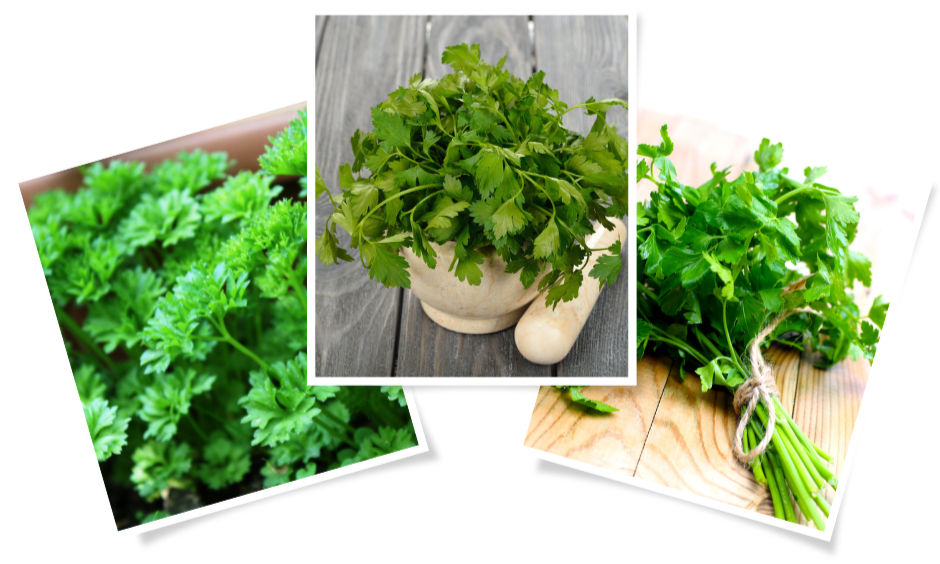Parsley Herb - Uses & Care
- Soul & Soil

- Sep 10, 2024
- 2 min read
Updated: Feb 3
Botanical Name: Petroselinum crispum

 Humidity Moist |  Lighting Part Sun |  Temperature 15-24°C |
|---|---|---|
 Difficulty Easy |  Hardiness Zone 2-11 |  Flowering Time Spring/Summer |
A member of the Apiaceae family, parsley boasts two main varieties: curly leaf and flat-leaf (Italian), each offering subtle differences in flavor and texture.
Native to the Mediterranean region, parsley has become a ubiquitous culinary herb, enhancing dishes across the globe with its fresh, slightly peppery taste.
This biennial herb thrives in cool climates, making it an ideal choice for spring and fall gardens or year-round indoor cultivation.
Parsley plants typically grow 15-60 cm tall, displaying vibrant green, either curly or flat leaves, depending on the variety.
While not particularly showy, parsley produces small yellow flowers in its second year, attracting beneficial pollinators to the garden.
Beyond its culinary value, parsley boasts a long history of medicinal use in various cultures. It's rich in vitamins and minerals, and has been traditionally used to support digestion, freshen breath, and aid in detoxification.
In folklore, parsley has been associated with protection, purification, and celebration. It was once used in funeral wreaths and as a symbol of victory in ancient Greece.
Water
Parsley prefers consistently moist soil but dislikes being waterlogged. Water when the top inch of soil feels dry, ensuring good drainage to prevent root rot.
Sunlight
While parsley can tolerate partial shade, it thrives in full sun, ideally receiving 6-8 hours of direct sunlight daily. In hot Australian summers, afternoon shade can protect the delicate leaves from scorching.
Fertilizer
Feed parsley regularly during the growing season with a balanced, water-soluble fertilizer to promote healthy growth and abundant leaf production. Consider a fertilizer with a slightly higher potassium ratio like 5-5-10 or 5-10-5 to enhance root development and overall plant vigor. Organic options such as compost tea or diluted worm castings are also excellent choices.
Soil
Plant parsley in fertile, well-drained soil rich in organic matter with a pH of 6.0 to 7.5. Consider a premium bagged potting mix if growing in containers.
Temperature
Parsley prefers cool to moderate temperatures between 15-24°C (59-75°F). Protect it from frost and extreme heat.
Pruning
Regularly harvest parsley leaves to encourage continuous new growth. Snip stems just above a leaf node to promote branching.
Harvesting
You can start harvesting parsley leaves once the plant has developed several sets of true leaves. For optimal flavor, harvest leaves in the morning after the dew has dried.
Pests & Diseases
Watch out for common pests like aphids and whiteflies, and address them promptly with organic pest control methods like neem oil or insecticidal soap. Parsley can also be susceptible to fungal diseases like powdery mildew, so ensure good air circulation around the plants.
Companion Planting
Plant parsley near tomatoes, peppers, asparagus, and chives to enhance their growth and flavor while deterring pests. Avoid planting it near carrots, as they can inhibit each other's growth.
Remember that companion planting is not an exact science, and individual results may vary. Observe your plants and adjust your companion planting strategy as needed.



Comments